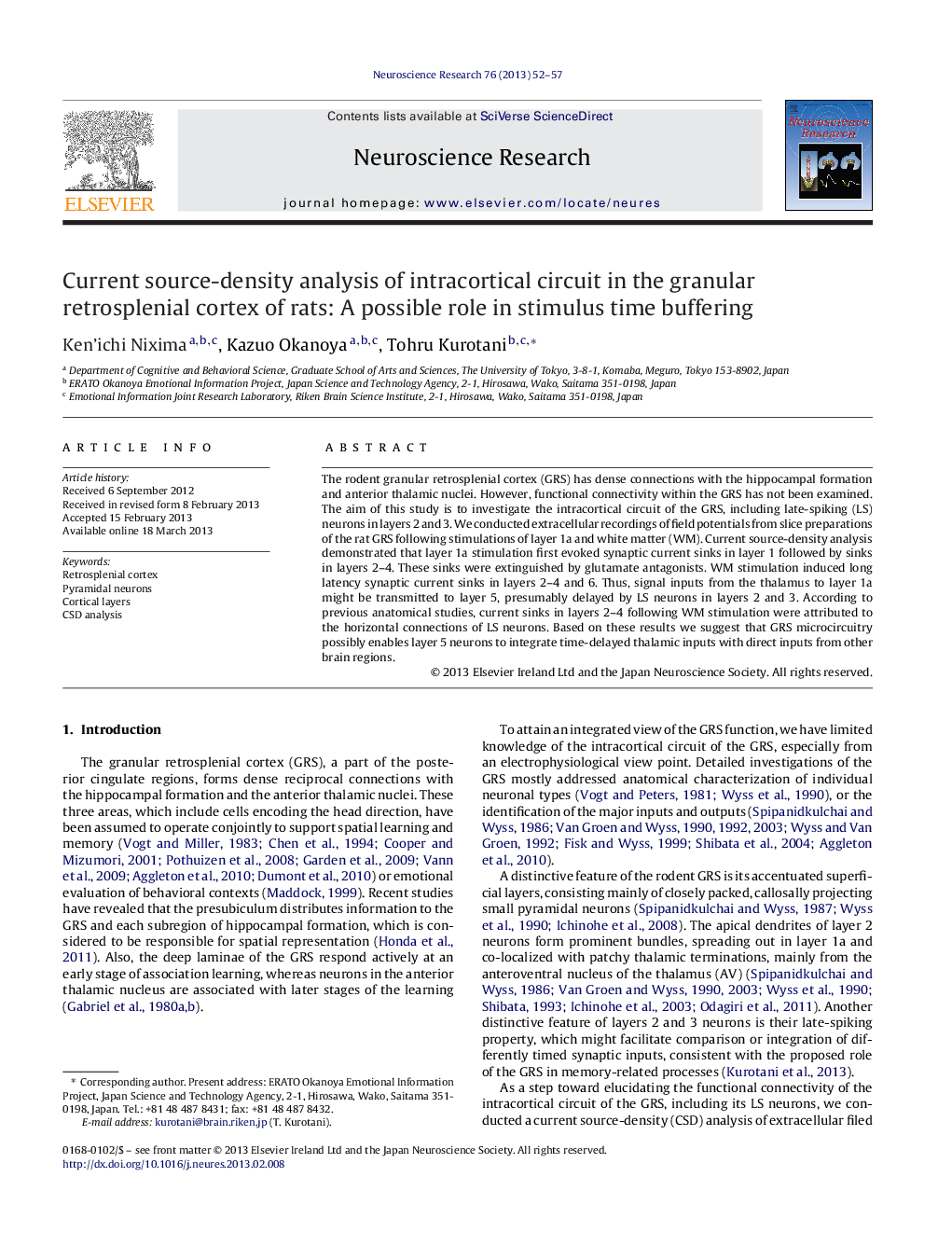| Article ID | Journal | Published Year | Pages | File Type |
|---|---|---|---|---|
| 4351427 | Neuroscience Research | 2013 | 6 Pages |
•Layer 1a stimulation first evoked synaptic current sinks in layer 1 and then layers 2–4.•WM stimulation induced synaptic long latency current sinks in layers 2–4 and 6.•Thalamic inputs might be transmitted to layer 5, delayed by LS neurons in layers 2 and 3.•GRS integrates time-delayed thalamic inputs with direct inputs from other brain regions.
The rodent granular retrosplenial cortex (GRS) has dense connections with the hippocampal formation and anterior thalamic nuclei. However, functional connectivity within the GRS has not been examined. The aim of this study is to investigate the intracortical circuit of the GRS, including late-spiking (LS) neurons in layers 2 and 3. We conducted extracellular recordings of field potentials from slice preparations of the rat GRS following stimulations of layer 1a and white matter (WM). Current source-density analysis demonstrated that layer 1a stimulation first evoked synaptic current sinks in layer 1 followed by sinks in layers 2–4. These sinks were extinguished by glutamate antagonists. WM stimulation induced long latency synaptic current sinks in layers 2–4 and 6. Thus, signal inputs from the thalamus to layer 1a might be transmitted to layer 5, presumably delayed by LS neurons in layers 2 and 3. According to previous anatomical studies, current sinks in layers 2–4 following WM stimulation were attributed to the horizontal connections of LS neurons. Based on these results we suggest that GRS microcircuitry possibly enables layer 5 neurons to integrate time-delayed thalamic inputs with direct inputs from other brain regions.
